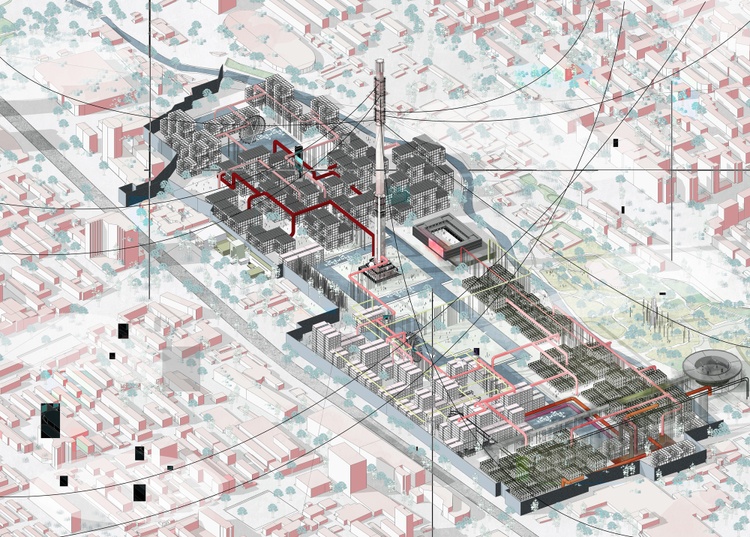Elevate Your Structure Style with the Expertise of CDA Architects
Elevate Your Structure Style with the Expertise of CDA Architects
Blog Article
The Impact of Technical Improvements on the Style Practices of Contemporary Architects
The fast development of technical devices has actually dramatically reshaped the layout landscape for modern designers, promoting extraordinary levels of innovation and sustainability. Checking out these characteristics reveals a nuanced interaction between modern technology and standard design methodologies, prompting a closer examination of what the future holds for building practices.
Development of Architectural Equipment
Just how have architectural devices changed the style and building processes over the centuries? The development of building tools has considerably influenced the efficiency, accuracy, and imagination of style and building and construction.
With the introduction of the Renaissance, the introduction of the compass and the protractor marked an essential shift. These tools allowed architects to accomplish greater accuracy in their layouts, facilitating the development of more detailed and proportionate buildings. The Industrial Transformation even more reinvented architectural practice with the intro of mechanical tools and products, enabling for larger and much more enthusiastic jobs.
In the 20th century, the advancement of computer-aided layout (CAD) software application changed the landscape once more, giving engineers with unprecedented capacities in modeling and visualization. Today, progressed devices such as Structure Details Modeling (BIM) and parametric layout software application continue to push the limits of architectural technology, allowing a more integrated method to layout and construction processes.
Improved Cooperation in Layout
As technology proceeds to progress, boosted collaboration in design has ended up being a foundation of modern building practice. The assimilation of electronic devices such as Structure Info Modeling (BIM), cloud-based platforms, and advanced visualization software has actually changed the way designers, engineers, and stakeholders connect throughout the layout procedure. These tools promote real-time interaction, enabling groups to share ideas, alterations, and responses quickly, despite geographical location.

Furthermore, interdisciplinary collaboration has been structured through these technological advancements, allowing architects to function more very closely with other specialists, such as urban organizers and environmental specialists. The outcome is a much more cohesive strategy to create that considers various viewpoints and knowledge. Inevitably, enhanced partnership in style is not just a fad; it is vital for developing ingenious, practical, and aesthetically pleasing style in an increasingly complex world.
Sustainability Through Innovation
Sustainability in architecture has actually progressively ended up being linked with technical development, driving the market towards eco responsible practices - cda architects. Contemporary designers are leveraging innovative modern technologies to decrease environmental impact while boosting the efficiency of structures. One noticeable example is the use of Structure Info Modeling (BIM), which enables for accurate planning and resource appropriation, decreasing waste during building and advertising energy efficiency throughout a building's lifecycle
In addition, smart materials and energy-efficient systems are being integrated right into designs to maximize resource usage. Technologies such as solar batteries and eco-friendly roof systems harness sustainable energy resources, adding to decreased carbon footprints. Furthermore, the application of fabricated knowledge in style processes makes it possible for designers to simulate and analyze power intake, guiding decisions towards even more sustainable outcomes.
The integration of sustainable technologies not only lines up with worldwide environmental goals however additionally satisfies a raising need from customers for eco-friendly solutions. As designers welcome these developments, the emphasis shifts towards producing rooms that are not only aesthetically pleasing yet additionally functionally sustainable, consequently redefining the requirements of modern-day architecture. By doing this, technology offers as a driver for sustainability, making it possible for designers to develop buildings that regard and improve the natural surroundings.
Obstacles in Implementation
While useful source technological innovations in design hold great guarantee for boosting sustainability, their application typically runs into significant obstacles - cda architects. One primary challenge is the steep understanding curve linked with new modern technologies. Architects and construction professionals might require substantial training to successfully make use of innovative software program and devices, which can postpone task timelines and enhance expenses
In addition, the combination of arising modern technologies, such as Building Details Modeling (BIM) and sustainable products, usually necessitates cooperation across multidisciplinary groups. he has a good point This cooperation can be impeded by differences in competence, process, and interaction styles, causing possible disputes and ineffectiveness.
Financial restraints better complicate the fostering of ingenious innovations. Several architectural companies, particularly smaller sized ones, might do not have the sources to purchase cutting-edge devices, restricting their capacity to contend with bigger companies that can afford such investments.
In addition, regulatory frameworks and structure codes may not maintain speed with technical developments, producing ambiguity and possible compliance problems. This challenge can inhibit designers from fully accepting brand-new innovations, as the threat of non-compliance might surpass the benefits. As a result, addressing these implementation challenges is vital for the effective integration of technological innovations in contemporary building methods.
Future Fads in Architecture
The challenges related to the execution of new innovations in architecture have motivated a reevaluation of future patterns within the sector. As engineers browse concerns such as sustainability, urbanization, and social equity, they are increasingly taking on cutting-edge technologies to boost layout effectiveness and environmental efficiency.
One popular pattern is the combination of artificial intelligence (AI) in the design process. AI devices can analyze substantial datasets to educate style decisions, enhancing both imagination and performance. Structure Details Modeling (BIM) proceeds to evolve, enabling real-time partnership amongst stakeholders and promoting structured project administration.
Sustainable layout methods are additionally getting momentum, with engineers focusing on adaptive reuse and regenerative layout concepts that reduce source intake and waste. The unification of smart products and renewable resource resources will even more improve the resilience of structures despite environment adjustment.

Conclusion
Technical innovations have significantly improved architectural design methods, facilitating enhanced precision, cooperation, and sustainability. The integration of tools such as Structure Information Modeling and parametric design software program, together with fabricated knowledge and clever products, equips designers to deal with intricate obstacles more properly.
Report this page